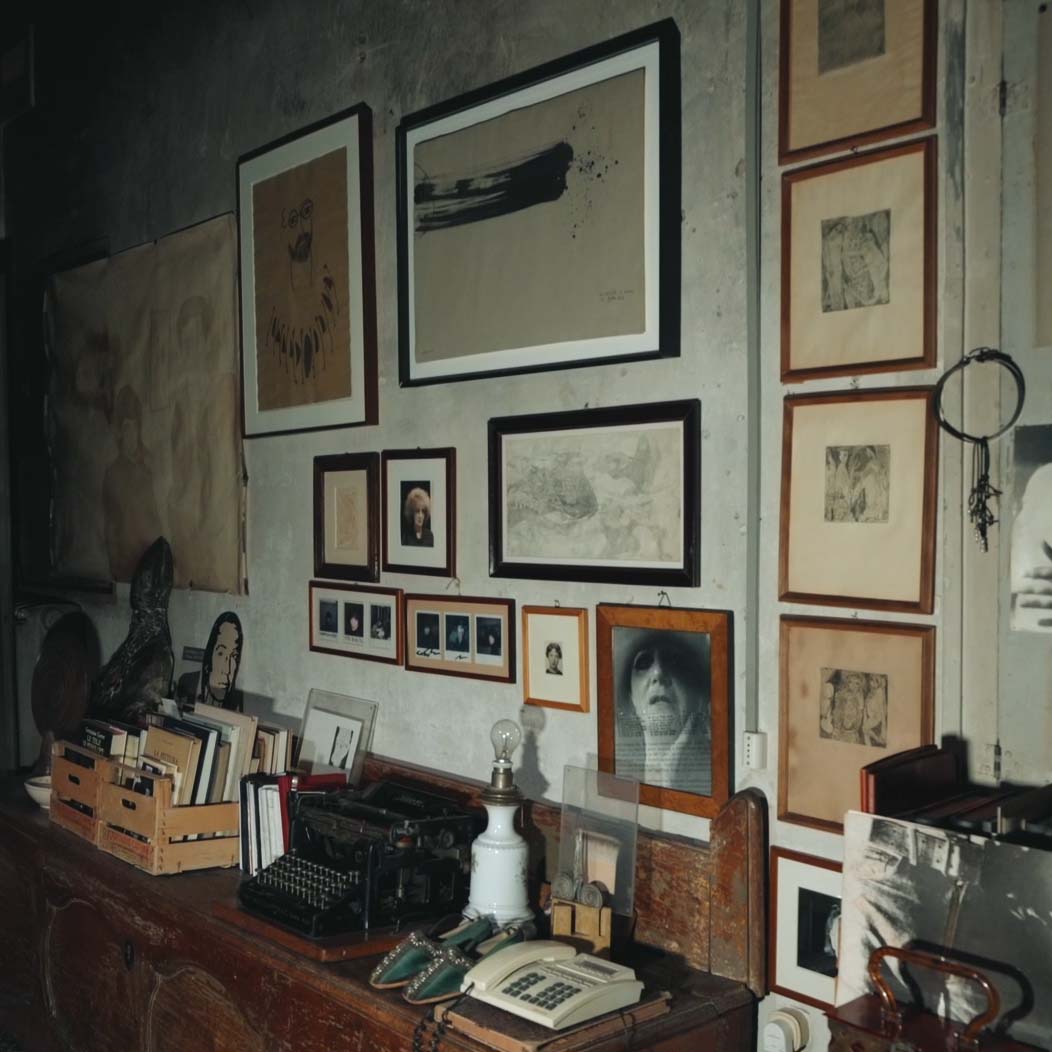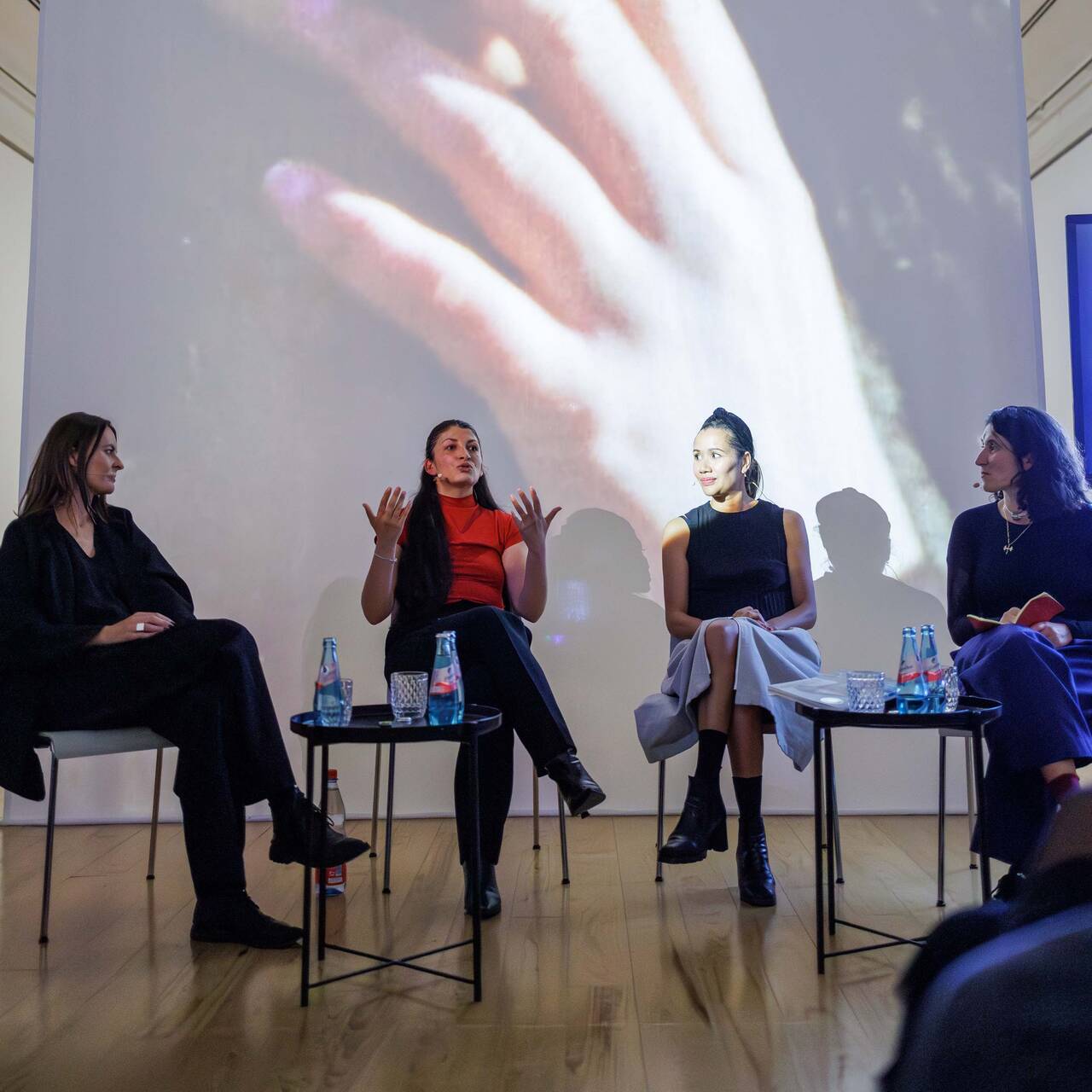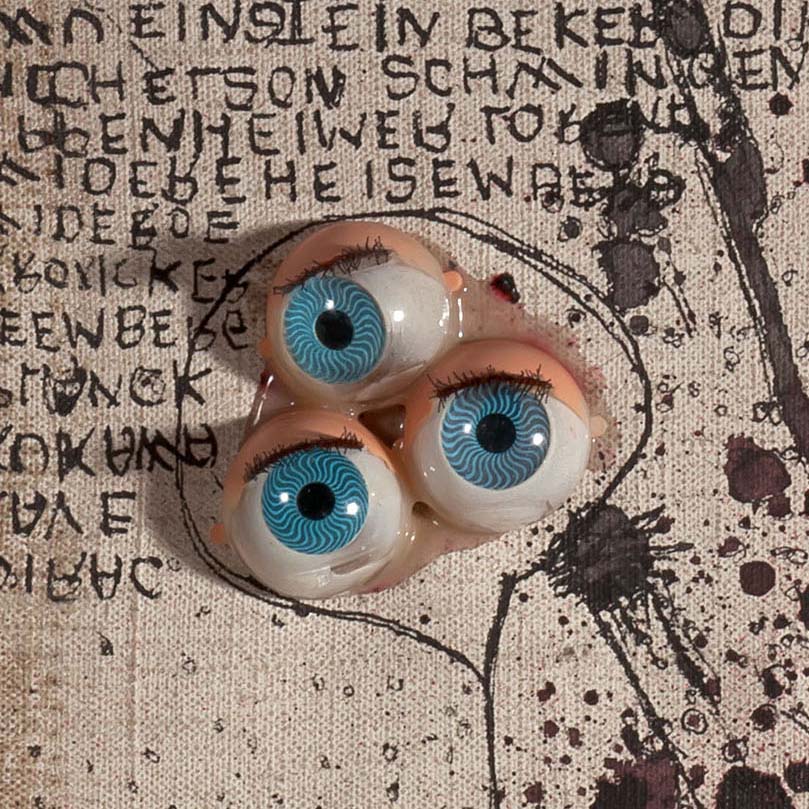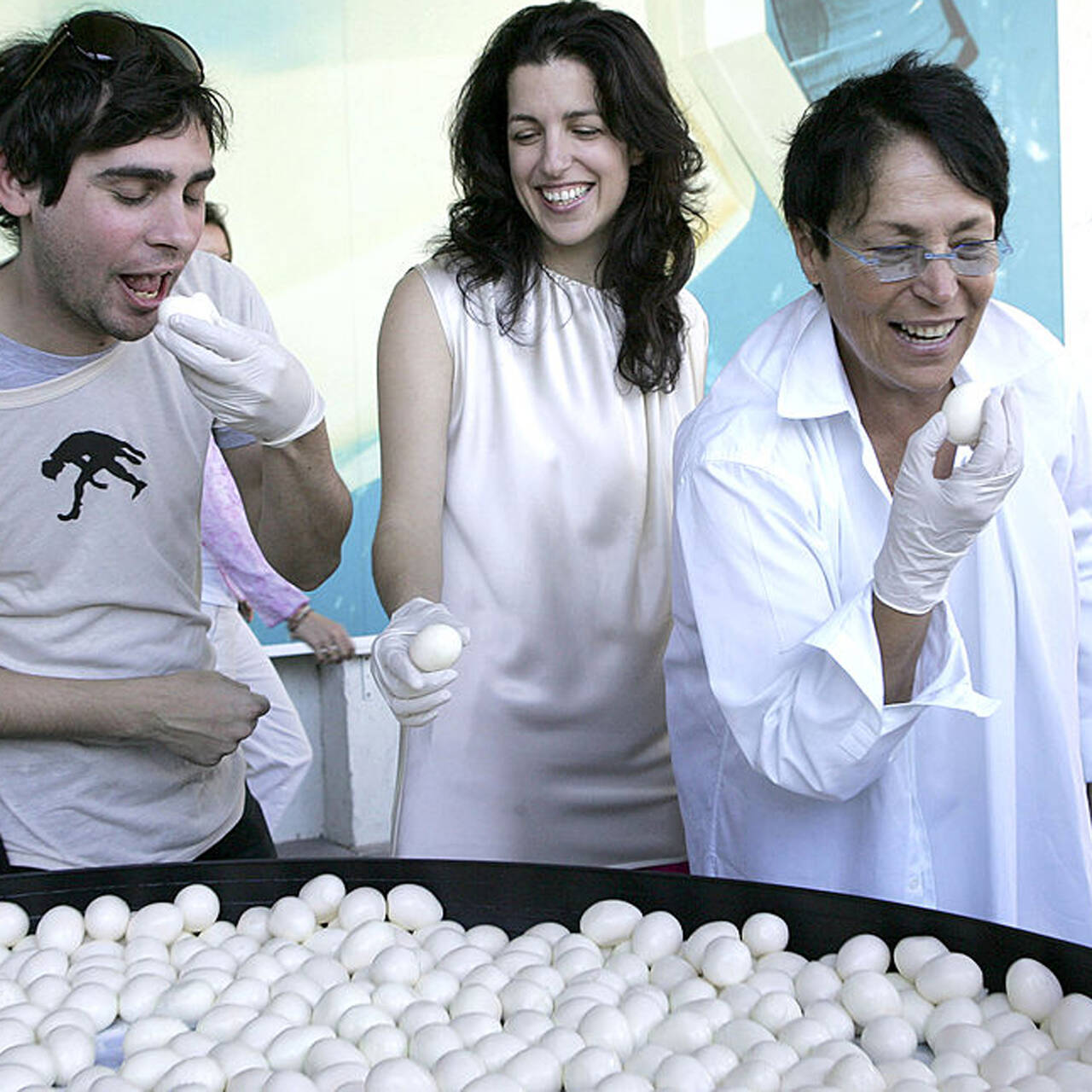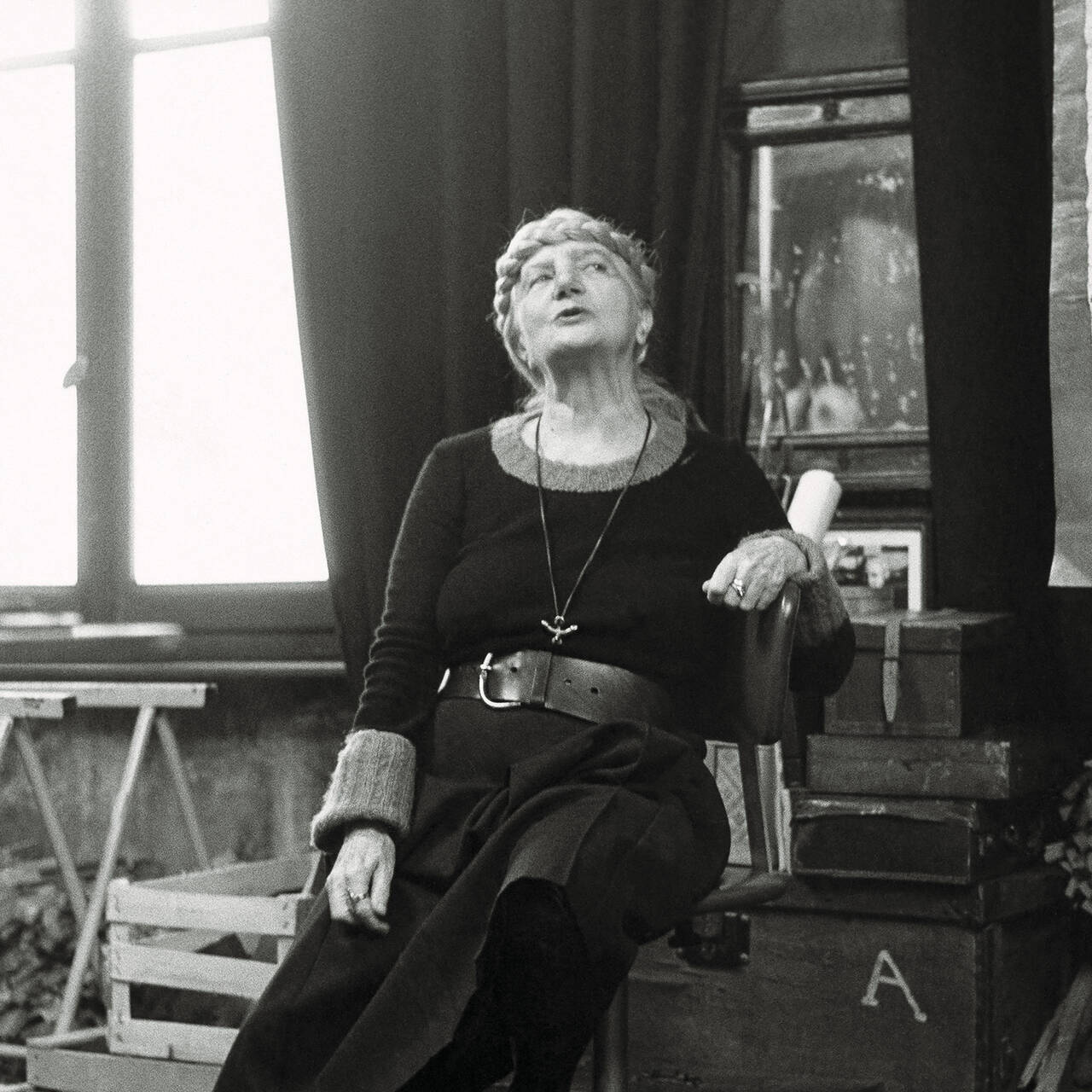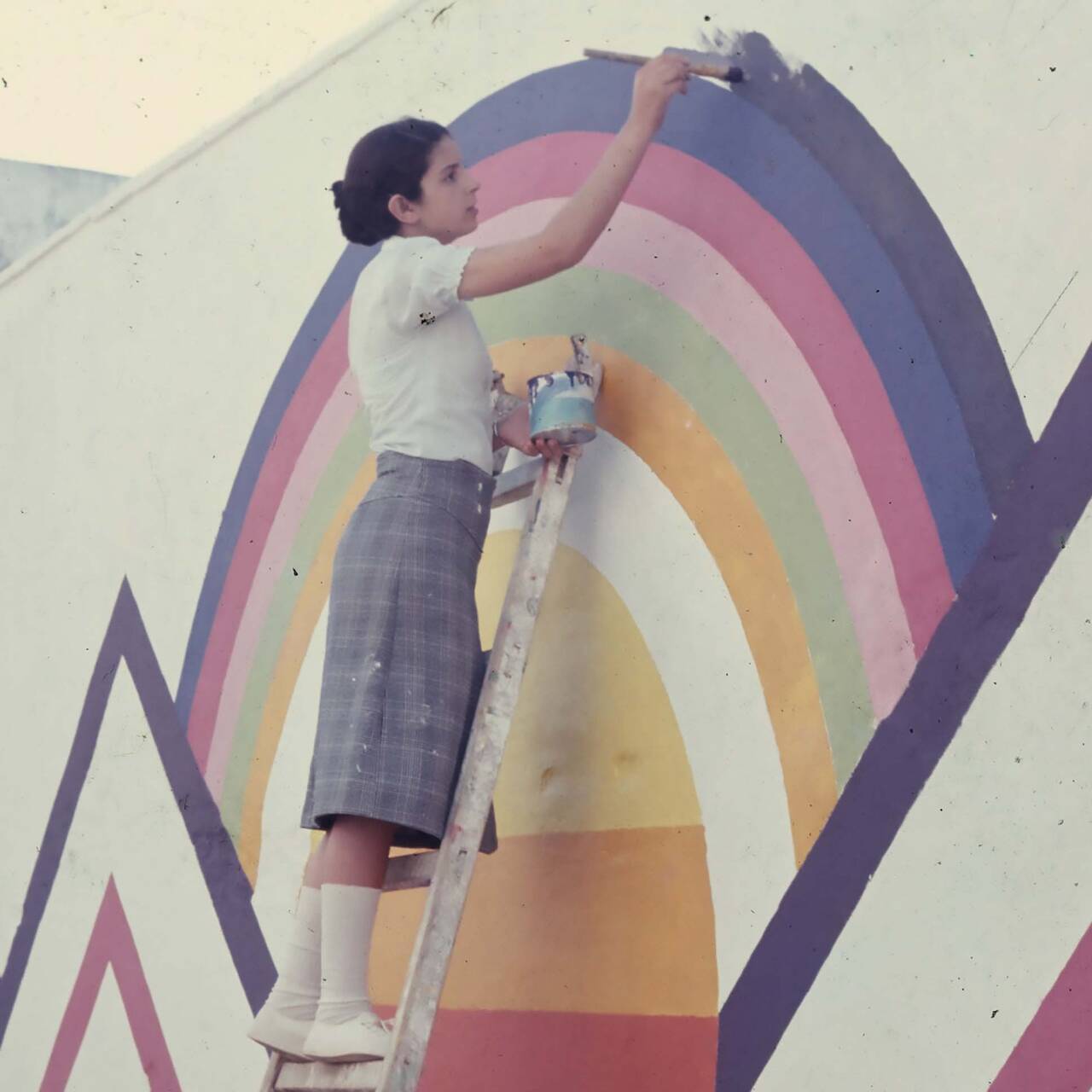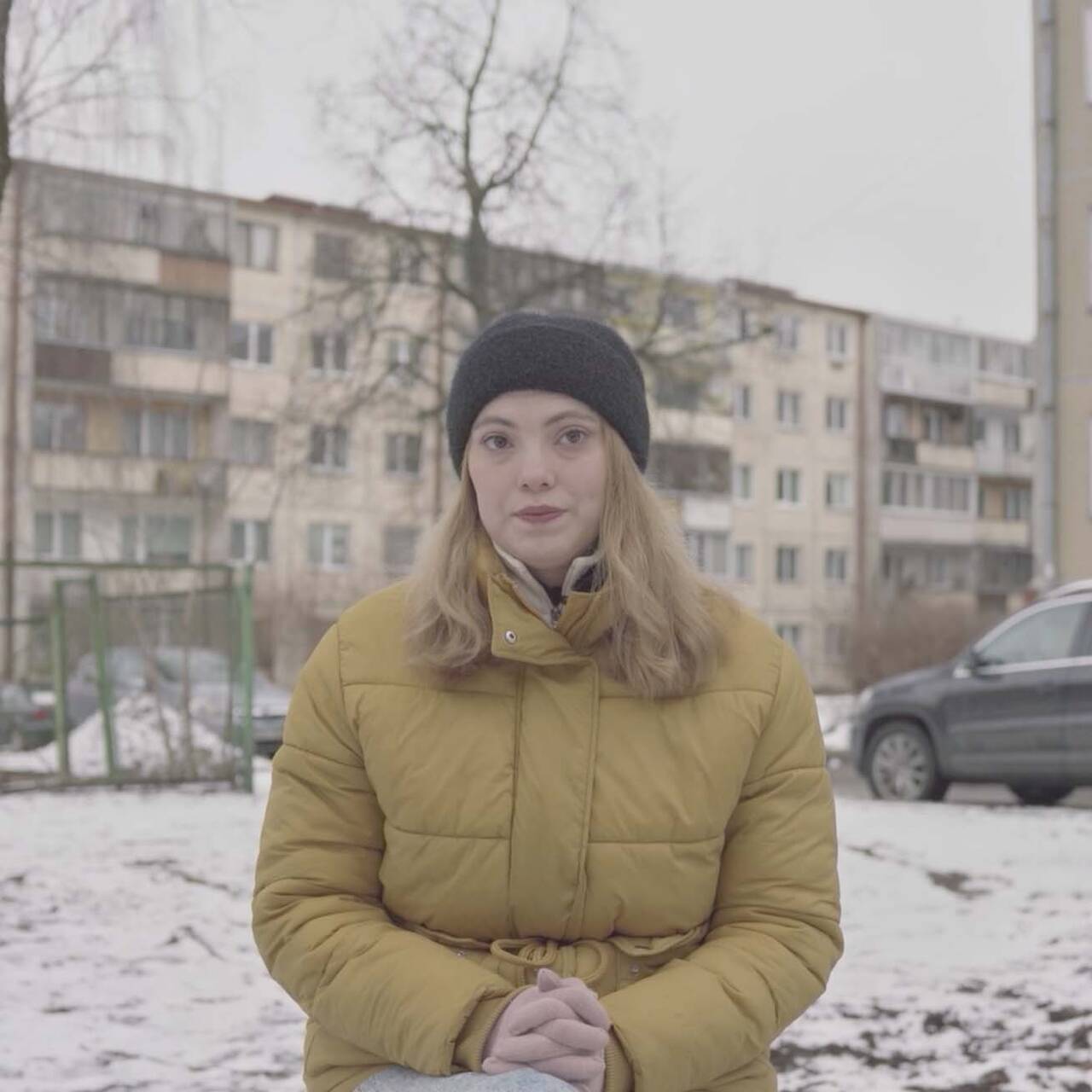In 2015, artist Kubra Khademi took to the streets of Kabul for her performance “Armor,” wearing a metal breastplate that mimicked sculptured breasts and a butt. An obvious protest. In an interview with the artist, Moshtari Hilal finds out more about the production process, the performance, and the aftermath.
In 2015, artist Kubra Khademi took to the streets of Kabul, Afghanistan, wearing a metal breastplate for her performance “Armor”. The armor mimicked sculpturally pronounced breasts and a butt while covering and protecting these self-same parts of the body. An idiosyncratic protection that confronts the people from whom you want to be protected with the places you are protecting. An obvious protest, which resulted in Kubra Khademi having to leave the country and live in exile in France ever since.
Until this performance, I was mainly aware of the strategies my female cousins used when in the market or on public transport, which involved poking a needle into the thighs and hands of any men who came too close to them. But these forms of protest are invisible, discreet, and very careful. The intention behind “Armor” was not to stab back, but to expose. A one-off, straightforward, purposeful walk down a shopping street in Kabul: Kubra Khademi did not walk in a circle, she did not return to her starting point, and as far as she was physically able, she continued to advance. One step after another, as if it were her natural right to walk along here, and it was – if it weren’t for the angry men gathering around her.
as far as she was physically able, she continued to advance

In a personal conversation with the artist, I was able to learn more about the production process, the performance, and the aftermath, and it was striking to learn how it all began:
“I didn’t have my own metal workshop in my apartment in Kabul, but I wanted to work with metal. I already had all the sketches and the measurements of my body drawn in detail, and I knew my way around the city. I knew where I had to go. In Kote-Sangi (note: a neighborhood in western Kabul), there are many small workshops in the side streets making stoves, for example, that are used for heating in Kabul. I chose a discreet workshop there that was not particularly large or open, but small and modest, because I was aware that I would have to go there more often to do some work myself, and that this sight alone would be out of the ordinary. I first had to persuade the owner to let me work in his workshop, and for 100 dollars he eventually let me use his tools and a meter of metal. Before he could change his mind, I cut my material directly so that I could then work it with him over the next few days.”
bit by bit, the shape of her metal object began to emerge and the tension grew
Kubra Khademi recounts how she spent as long as she could in the workshop manufacturing her armor every day after work for almost a month. It was an unusual set-up, which is perhaps why it was occasionally amusing for both sides. But bit by bit, the shape of her metal object began to emerge and the tension grew. She saw the owner of the small workshop anxiously take a big step back, while his young apprentices giggled and smirked.

“On the last day, I arrived with a big bag and the money to discreetly transport my work and finally pay him. That’s when I saw how they had placed the armor prominently on a table, but also covered it with a large cloth at the same time. The armor looked like a shrouded person. It was interesting to see how they treated it as if it were valuable, but also with the concern that someone might recognize my object as they walked by.” She decided to execute the performance on the very next day: an eight-minute walk wearing armor that had taken almost a month to produce and cost 100 dollars – aside from the further price that Kubra was still to pay with her exile.
The same year on March 19, just shortly after Kubra’s performance, Farkhunda Malikzada, a 27-year-old Afghan woman, was lynched in the middle of Kabul in broad daylight under the eyes of hundreds of men. She was not wearing any armor. The aspiring religion teacher had been falsely accused of burning a Koran and of working for the Americans or the French, when the mob decided to punish her. In the wake of her gruesome lynching, documented on cellphone videos, 49 men were arrested, including minors and police officers who failed to protect her.
The murder sparked a global wave of protests: Thousands of people took to the streets in Kabul, walking again the route that Farkhunda had taken to flee her tormentors. From the starting point of the attack to the spot on the dry Kabul River where her body was publicly burned. A modest memorial to her stands there today. The protesting women wore masks of her face covered in blood, a final photo of her face with a desperate, frightened expression that was shared all over social media.

I tried to avoid social media because I received so many threats
A lot happened that spring in Kabul in 2015, and when I ask Kubra if she was aware of the magnitude of the risk, the danger she had exposed herself to, I imagine the hairs on the back of both our necks standing up. The thought that Kubra could have been in Farkhunda’s place is alarming.
The reason such a wave of protest arose after her murder, including in my home city of Hamburg, was her innocence – she had not burned the Koran. Only following such a murder, which was just one appalling crime of many against women in Afghanistan, could such widespread anger and grief build up. A comparable reaction would be unimaginable in the case of a performance artist like Kubra Khademi, who not only belongs to the structurally marginalized ethnic group of the Hazara, but also works in a feminist way and here with explicit sexual connotations.
“When this happened to Farkhunda, I was already in hiding. I tried to avoid social media because I received so many threats. It was a veritable nightmare, to be confronted with so much rage, mainly from men but also from women. Initially, I thought these angry reactions would subside over time. Being shouted at and insulted as a woman was something I was already familiar with from my everyday life in Afghanistan. But this went beyond that. I was shocked. At some point I asked myself: What have I done? What is this?”

Undoubtedly, every artist is afraid before a performance. Every new performance makes you vulnerable

Kubra recalls how some people, including a prominent colleague, wrote that she was responsible for what was done to Farkhunda. She claimed that the performance created the testy mood and anger that led to the lynching in the first place, so instead of Kubra, they killed Farkhunda. She had not expected these reactions. She was aware that society would take her performance as offensive; she knew the society in which she lived and worked every day. She could have dealt with that, but this was more than she had expected.
She was aware that society would take her performance as offensive
“Undoubtedly, every artist is afraid before a performance. Every new performance makes you vulnerable. But that doesn’t mean that artists should calculate and measure the reactions to their work in advance. We plan ahead, of course, but we also let a lot of things just happen. We create a situation.”
For Kubra Kademi, there is no “outside the personal”. Her artistic work is itself personal, it arises directly as a reaction to experiences she has had. And she experiences the consequences, the outcomes of her work, just as directly. Finally, I ask Kubra if she would count “Armor” as her most influential performance. She laughs: “Well, I would say I was at my most vulnerable. The performance led to a lot of suffering: I had to leave my country; I lost a great deal. But I was lucky because I survived it. And yet, to this day, I am still paying for the performance.”



